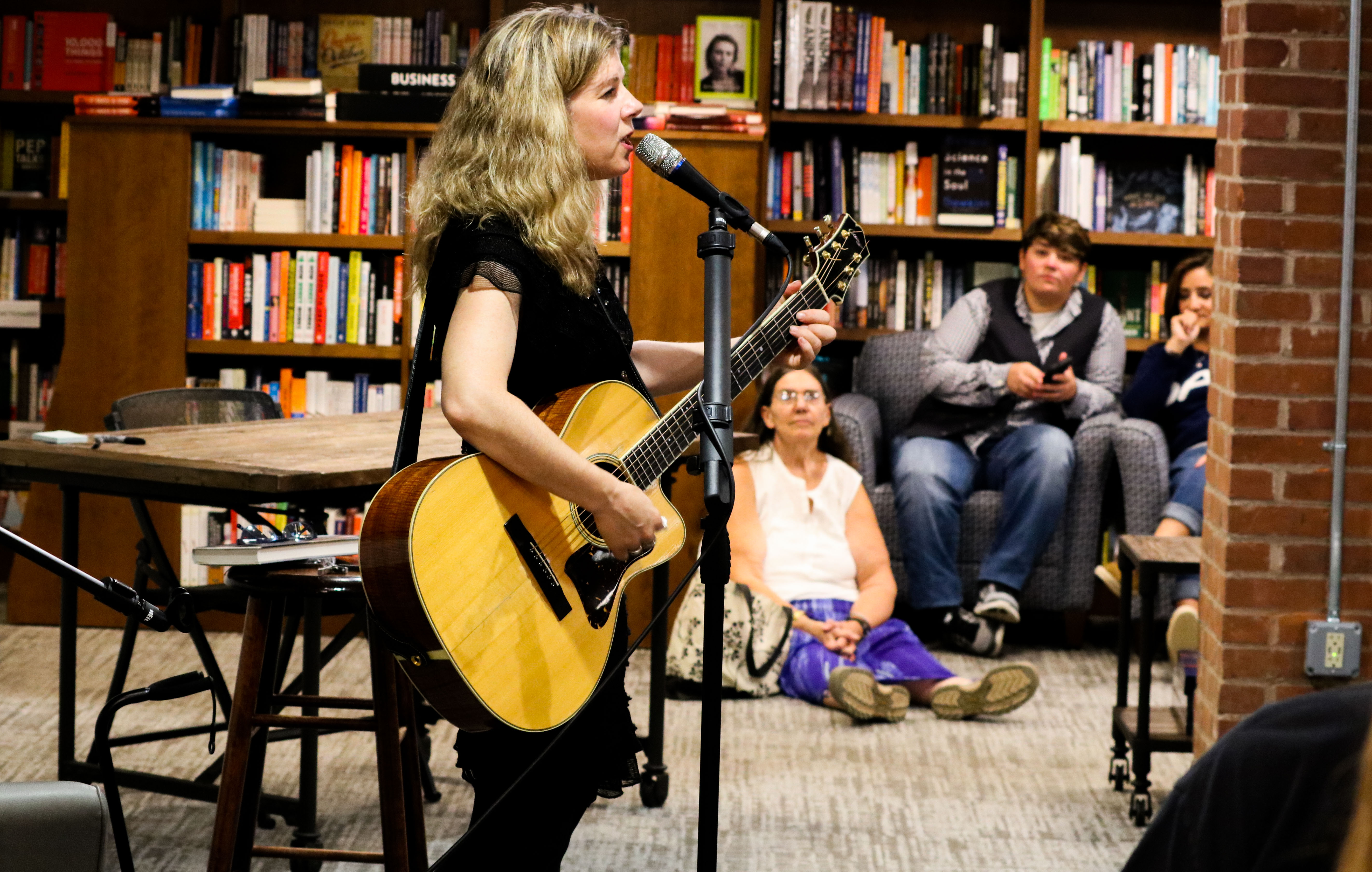
Dar Williams ’89 returned to Middletown on Tuesday evening to talk about her recent book “What I Found in a Thousand Towns.” Williams, labeled by The New Yorker as “one of America’s very best singer-songwriters,” spoke of her time at Wesleyan University, read from her book, and sang for the crowd at the Wesleyan R.J. Julia Bookstore.
Following an introduction with her song “Buzzer,” the folk musician delved straight into the content of her book, which discusses small towns in America. Williams herself grew up in a small town in New York and was disturbed by the breakdown of community. When she was on her way to Earlham College, she realized the devastation of “big box stores,” which lured people towards malls and away from their own downtowns.
“We were seeing all these towns that were shuttered up, and I said ‘What is this?’” Williams told the audience.
Williams spoke of how her time at Wesleyan University put into perspective how much these towns had changed.
“I got the skinny from a wonderful professor here, Rob Rosenthal, who said back in the day there were all these factories, and they’re gone,” William said. “We didn’t know that [Middletown] had been struck in so many ways.”
According to Williams, one way that towns can rebuild into communities is through positive proximity.
“When people transcend the myth that proximity means conflict and invasion of privacy, they gravitate towards finding ways of integrating the talent and skills of their community members,” she read aloud from her book. “After people discover each other in the commons of towns, more connections are made.”
Likewise, she noted the importance of connecting with people via commonalities, rather than ideologies.
“Don’t start with values, start with the little things that help you find one another so you know one another,” she told the crowd.
Williams argues that towns can build this positive proximity through building common spaces.
“Things that get people talking to one another and tilt conversations towards the community,” she explained.
Likewise, Williams argued that anything that gets people out of their house and in the town forms organic connections between people.
Building an identity for the town, whether that be through history or a new development such as a unique food culture, can spur positive change for the growth of communities.
The last way is through what Williams calls translation, or building a sense of access to the town that transcends differences. Williams explained that her entire book had an eye toward gentrification and diversity.
“Discover each other through our differences, not despite our differences,” she said, quoting her town’s rabbi.
Williams spoke highly of the relationship between Middletown and Wesleyan.
“This bookstore being here is actually a big deal because it will continue to get people off the hill and continue to build these relationships,” she said.
Williams spoke of the importance of getting out of the bubble that many students on college campuses feel. She particularly encouraged citizens and students alike to not give up on using government to make communities out of towns.
“As opposed to the culture of blame that says ‘government is this thing to blame,’” Williams noted, arguing that local government can be very effective in enacting change.
Williams consistently mentioned Wesleyan professors and Middletown community members as prominent influences in her life.
“One of the reasons, perhaps, that I am standing here today is the first week I was at Wesleyan there were these speakers,” she said. “The most charismatic one was this young guy Mark Masselli and he said I’m getting this great education but ‘What are you going to do with that education?’”
After speaking, she invited questions from those attending. One individual asked whether towns needed to have a university in order to build a community.
“It’s actually a red herring,” Williams responded.
Williams provided the example of Moab, Utah, which only has 7,000 citizens and no college. She described that not even people in Salt Lake City knew of Moab 25 years ago, but the town built an identity that now attracts 1.5 million tourists annually.
One woman asked how Wesleyan could expand its relationship with Middletown.
“I think because of some of these relationships being built, Wesleyan and Middletown are going to get a better idea of what those possibilities are going to be,” Williams said.
Mason Mandell can be reached at mjmandell@wesleyan.edu.










Leave a Reply